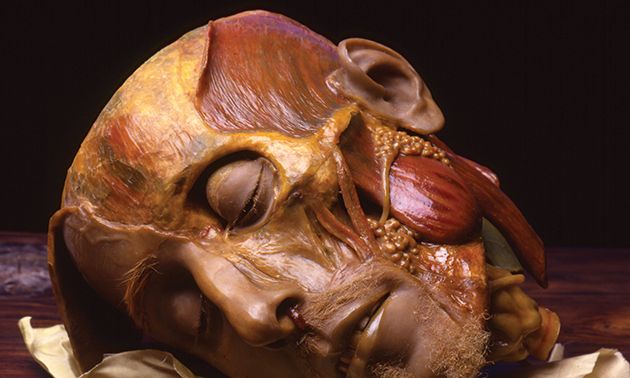Face off: an anatomical head modelled in wax by Gaetano Giulio Zumbo Saulo Bambi; Sistema Museale Università di Firenze
One of the oldest science museums in Europe has reopened in Florence in time for its 250th anniversary with a renewed display of its remarkable wax models, which were used for anatomical studies as a substitute for real dissected corpses in the 18th and 19th centuries.
La Specola was the first natural history museum to open to the public in 1775, commissioned by the grand duke of Tuscany, Peter Leopold of Lorraine, a few years after he inaugurated the Uffizi galleries. Officially known as the “Imperial and Royal Museum of Physics and Natural History”, it was called “La Specola” after the astronomical observatory the grand duke had constructed.
It soon became an important scientific centre under the direction of polymath Felice Fontana. He established the workshop that produced the wax models. With around 1,400 examples, it is the largest collection of its kind, including the creations of the Sicilian Baroque master Gaetano Giulio Zumbo, and Clemente Susini’s macabre “Venus”, a reclining female nude with a pearl necklace. Her removable replica organs conceal a tiny foetus in utero.
Now part of the University of Florence, the museum closed in 2019 for renovations, which were then delayed by the pandemic. But it never disappeared completely thanks to a temporary display at the Basilica di San Lorenzo from December 2019 to September 2022. And in 2023 a selection of the wax models travelled to Milan for an unusual “guest museum” exhibition with the Fondazione Prada, including a short film by the director David Cronenberg that put his visionary body-horror spin on the Venuses.
La Specola’s €6m refurbishment—€3.5m from the regional government of Tuscany and €2.5m from the University of Florence—has transformed and expanded the collection displays to take over the entire historic building once again. The Palazzo Bini Torrigiani’s first floor, formerly occupied by the university and Italy’s National Research Council, has been turned into a new wing for the mineralogy collection. Space has been cleared on the ground floor for a reception area and bookshop.
Marco Benvenuti, the president of the University of Florence museums, describes it as a “restyling” that preserves the museum’s popular zoological and anatomical collections while adding new rooms that “after almost a century and a half bring back the wonderful collections of minerals and gemstones to La Specola”. The famous anatomical waxworks are complemented by life-sized botanical waxes of exotic fruit plants, along with anatomical models in wood and papier-mâché, which are “important for understanding the educational uses” of these objects, Benvenuti says. After all, the museum was founded by Peter Leopold to “enlighten his people”, in the belief that education would bring the citizens happiness.
La Specola has its roots in the Renaissance view of knowledge that did not separate science and the arts. Benvenuti observes that contemporary art’s interest in the natural world is growing again, a synergy the museum hopes to capture. “We will continue to cultivate the combination of art and science,” he says, hinting at future exhibitions in which works by contemporary artists will open a dialogue with the dawn of modern science.

